Cookbook Review: Voilà Vegan
Can a butter-soaked Marissa really find pleasure in a vegan dessert book? You bet your aquafaba she can.
When I was given a review copy of the Voilà Vegan vegan dessert cookbook, I can’t say I was super excited. I fall squarely on the butter, egg and moo-cow-dairy end of the baking spectrum. But over the years —this Substack is coming up on it’s third (!) birthday—readers have asked how to vegan-ify desserts, so I decided to test some recipes from the cookbook, just like I used to do for Publishers’ Weekly.
Can you help a sweet omnivore of an algorithm and click the “like” button to let all the ones and zeros everywhere know we are here? Thank you.
Also, I’m not a caveman, and vegan food is now mainstream. Restaurants that don’t offer vegan main dishes as standard seem backward and out of the loop, with the possible exception of joints like New Jersey’s 80-years-young Steve’s Sizzling Steaks and chains such as Outback Steakhouse.
As an aside, I inspected the Outback menu to see what a vegan might eat if they were dragged there on some family outing, and learned all they’ll be ordering is a salad, with the cheese removed. I then got distracted by the “Boozy Bevvies” portion of the menu, which offers up some truly ridiculous cocktails. This one in particular gave me pause. Or should I saw, paws?
I guess this explains why koalas are endangered.
But shut up I must and get to the point. This cookbook is fantastic for vegans, but also all people who like delicious baked goods no matter your eating preferences.
The cookbook’s author, Amanda Bankert, is an American expat who owns Boneshaker, a popular vegan donut shop and bakery in the butteriest of all places, Paris, France. Amanda, who trained at Le Cordon Bleu, also spent summers on the Jersey shore and did an eight-year stint at a bakery in Dublin, Ireland and her cookbook reflects this dessert diversity.
Along with some French classics, including chocolate-raspberry macarons, crêpes Suzette and almond financiers (more about those later), there are traditional American recipes, including classic Jersey boardwalk chocolate fudge, pumpkin cake donuts and double fudge brownies that were once voted in “Best in Paris.” There are also some happy cross-cultural takes, such as maple syrup madeleines, donut profiteroles and a banana speculoos coffee cake that is next on my “To Bake” list.
Along with her friendly, approachable recipes, this is a good book for anyone who wants to learn how to vegan-ize their desserts. Amanda’s clear explanations of the various replacement ingredients will give even new bakers confidence to use aquafaba and the like.
Luckily, quality vegan ingredients are more readily available now. I can find Miyoko’s cultured European-style vegan butter at my decidedly not fancy local ShopRite, along with soy cream and barista-style oat milk (best for adding silky creaminess, according to Amanda).
Of course my market also has shelves full of chickpeas, the source for the vegan miracle liquid known as aquafaba. Aquafaba, which Amanda calls “an egg white replacer extraordinaire,” is simply the liquid poured from cans of chickpeas. Whipped into a stiff foam and piped into kisses, you would be hard-pressed to know the difference between an aquafaba meringue and an egg white version. One 15-ounce can of chickpeas yields about 1/2 cup (120 ml) of aquafaba.
Speaking of chickpeas, the only thing missing from this otherwise comprehensive cookbook is a recipe for hummus. Because after decanting cups of aquafaba for recipe testing, I’ve got about 4 pounds of chickpeas in my fridge waiting patiently for me to do something with them.
(FYI: Tonight the chickpeas will be used in a recipe for spicy butternut squash and herby chickpea salad from Emily Nunn’s brilliant Substack “The Department of Salad.”)
I tested three recipes from the cookbook (so far), all of which I’d make again, and not just to pander to vegan friends.
I served Amanda’s version of pumpkin pie to a table of omnivores—some of whom, I will admit, have dabbled in veganism—and it was deemed rich with spice and satisyingly custardy. My pie took 30 minutes longer to to reach the “wobbles ever so slightly” stage, but I think that’s due to my pumpkin puree being watery. (If you have a choice, rely on Libby’s canned pumpkin for uniform results. For this recipe I used Trader Joe’s pumpkin and I wouldn’t again.) That said, a slice of this will make any card-carrying vegan give real thanks this holiday season.
Amanda was inspired by the classic French breakfast of OJ, coffee and a pain au chocolate to create her sweet breakfast roll recipe. The recipe was simple, with clear instructions. I impatiently ate one still warm from the oven, the chocolate-espresso filling still gooey, the ultra-tender dough mellow with nutmeg and the fresh orange juice glaze just set. I then licked my fingers so as not to gunk up my iPhone screen, and put out an APB over my neighborhood What’s App chat. My family couldn’t be alone in the house with these rolls or they’d be devoured within the hour. I asked anyone awake get to my house. Those who did were rewarded with a small package of the sticky buns. The sad neighbors who didn’t make it would’ve heard one of our neighbors yelling back to me as she walked home with her mouth full, “OMG, MARISSA, I’VE JUST DIED AND GONE TO HEAVEN.”
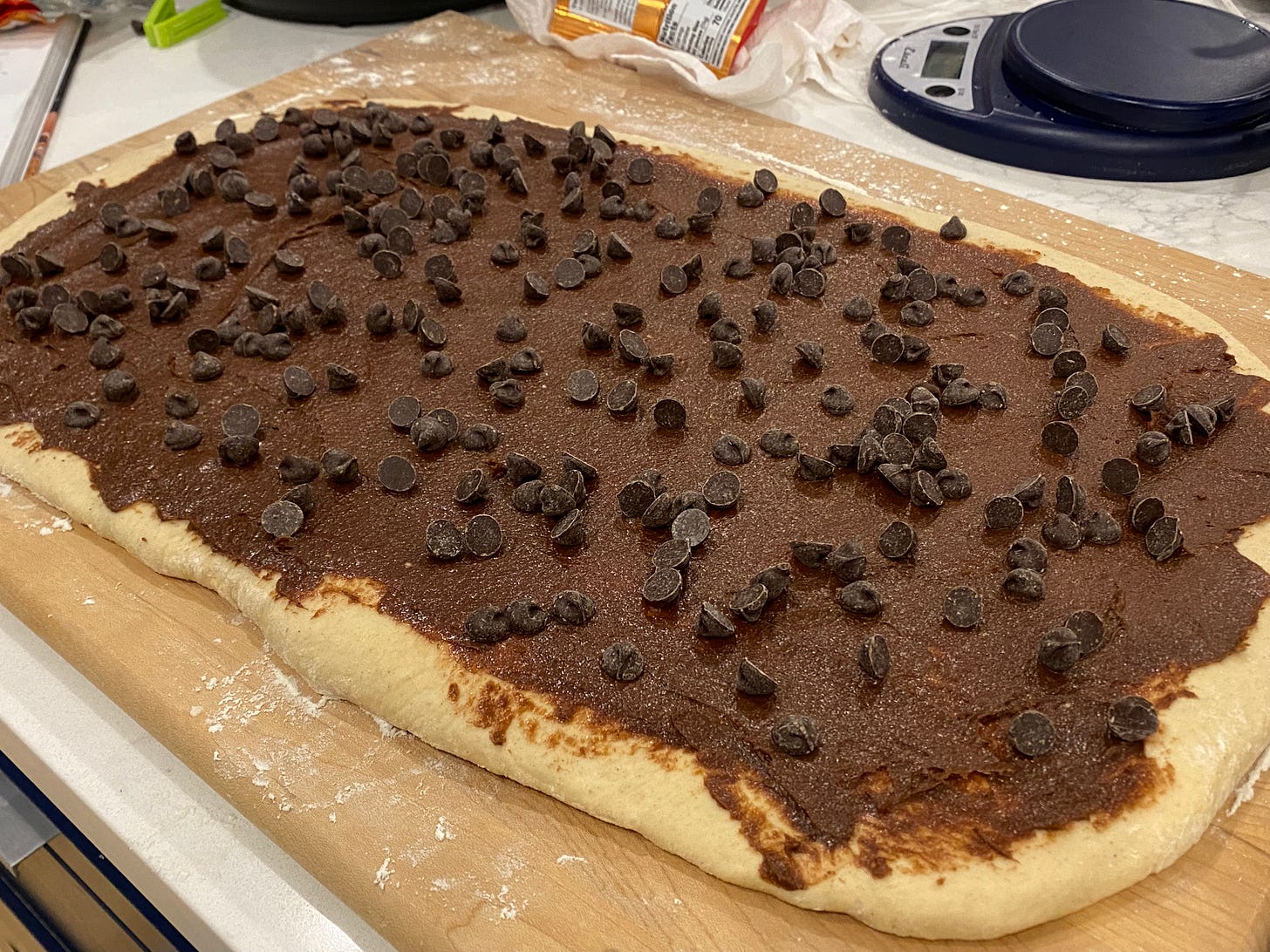
More subtle, but no less delicious, were the financiers, which are rather dense little cakes, traditionally rectangular in shape and meant to resemble gold bars, like the kind Senator Menendez of New Jersey keeps in his suit pockets. The cakes, which are made with a mix of white and almond flour, are flavored with almond extract. Aquafaba binds and provides some lift in lieu of eggs. The resulting cake caramelizes as it bakes, leaving a crun-chewy outside that yields to a tender center. Financiers take well to the addition of fruit, so I added some chopped pear just before baking. You should too. Or raspberries. Or blueberries.
Of the three recipes I tried, I know I will make the buns and the financiers over and over again, whether I am feeding a vegan audience or not. They are best in class recipes. The pumpkin pie was exceptionally good, too. I might choose an old-fashioned egg custard-based pumpkin pie if both types were in front of me, but
Bankert’s version was still a marvel of texture and taste.
I reached out to the author to get permission to reprint her financiers recipe, which is below. I also plan to have Amanda on an episode of The Secret Life of Cookie podcast before Thanksgiving, to talk about festive desserts that just happen to be vegan, so stay tuned.
You can find Voilà Vegan, by Amanda Bankert wherever fine books are sold, including Indiebooks.
Financiers
from Voilà Vegan, by Amanda Bankert, Avery Books, 2023.
1 1/4 cup (150 grams) powdered sugar
3/4 cup (90 grams) all-purpose flour
2/3 cup (72 grams) almond flour
1/2 teaspoon baking powder
1/2 cup, plus 2 tablespoons (150 ml) aquafaba
(nb: One 15-ounce can of chickpeas yields about 1/2 cup (120 ml) of aquafaba.)
4 1/2 tablespoons (65 grams) vegan butter, melted
1/2 teaspoon vanilla extract
1/4 teaspoon almond extract
In a large bowl, sift together the powdered sugar, all-purpose flour, almond flour, and baking powder. Add the aquafaba, melted butter, vanilla, and almond extract and stir to combine. Transfer the batter to a storage container and let it rest in the fridge for 2 to 6 hours. (Note from Marissa: I baked these a few times, and the longer I let the batter the rest, the better texture the cakes had.)
Preheat the oven to 325°F (170°C). Grease and flour a 12-cup muffin tin, taking care to make sure each cup is very well greased and floured. Fill the cups two-thirds of the way full with the batter.
Bake for 20 to 25 minutes, rotating the pan once halfway through, until golden around the edges.
Let cool completely in the pan, then gently remove them by running a butter knife around the edges of the cups and lifting out the financiers.
The cakes are best if served the day they’re made but can be stored in an airtight container at room temperature for up to 3 days.
This week on The Secret Life of Cookies podcast, my guest was Laurie Lico Albanese, the author of Hester, about the fictional origin story of The Scarlet Letter’s main lady. We made these financiers together, while we discussed the steamier and seamier side of Nathaniel Hawthorne. A link to the podcast is below.
This substack is a reader-supported publication. I cannot do it without you. If you’re able, paying for a subscription helps pay for the groceries necessary for recipe-testing and recipe development. Also, it supports me—a freelance writer and ad-free journalism. The pay scale for journalists and writers has not kept up with the cost of living. That’s why having a substack newsletter has become such a terrific venue for so many writers. Best of all, however, it puts me, Bosco, Calvin and Clyde and my giant dahlias in touch with our readers like never before. Thank you.
Can’t afford a subscription? Do the next best thing and give free subscriptions to all your friends. The more the merrier.


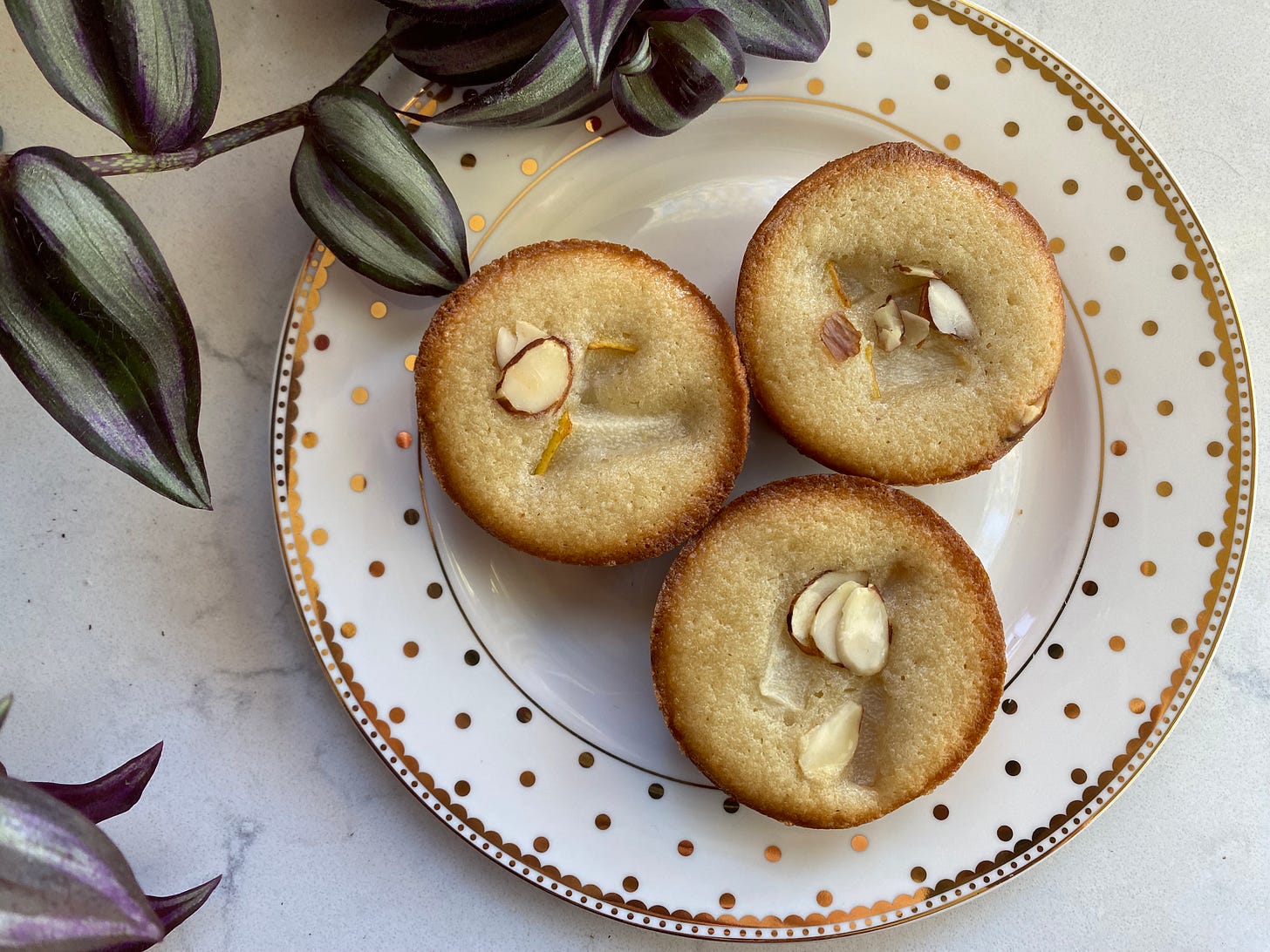

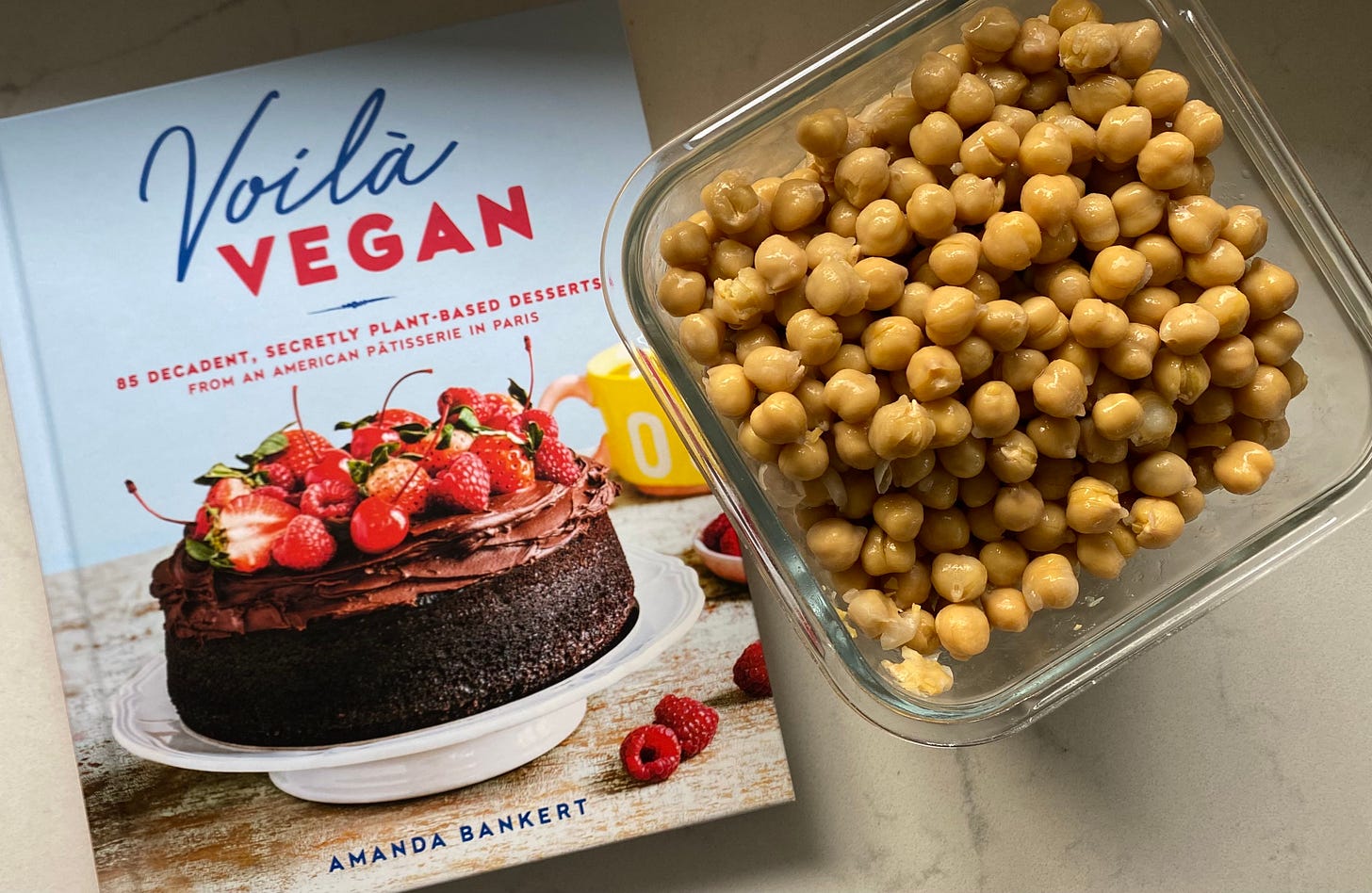
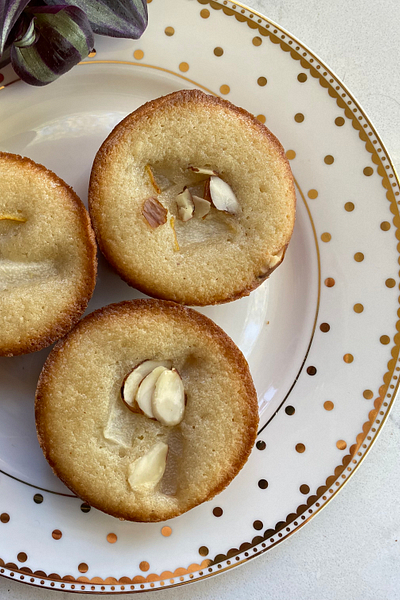
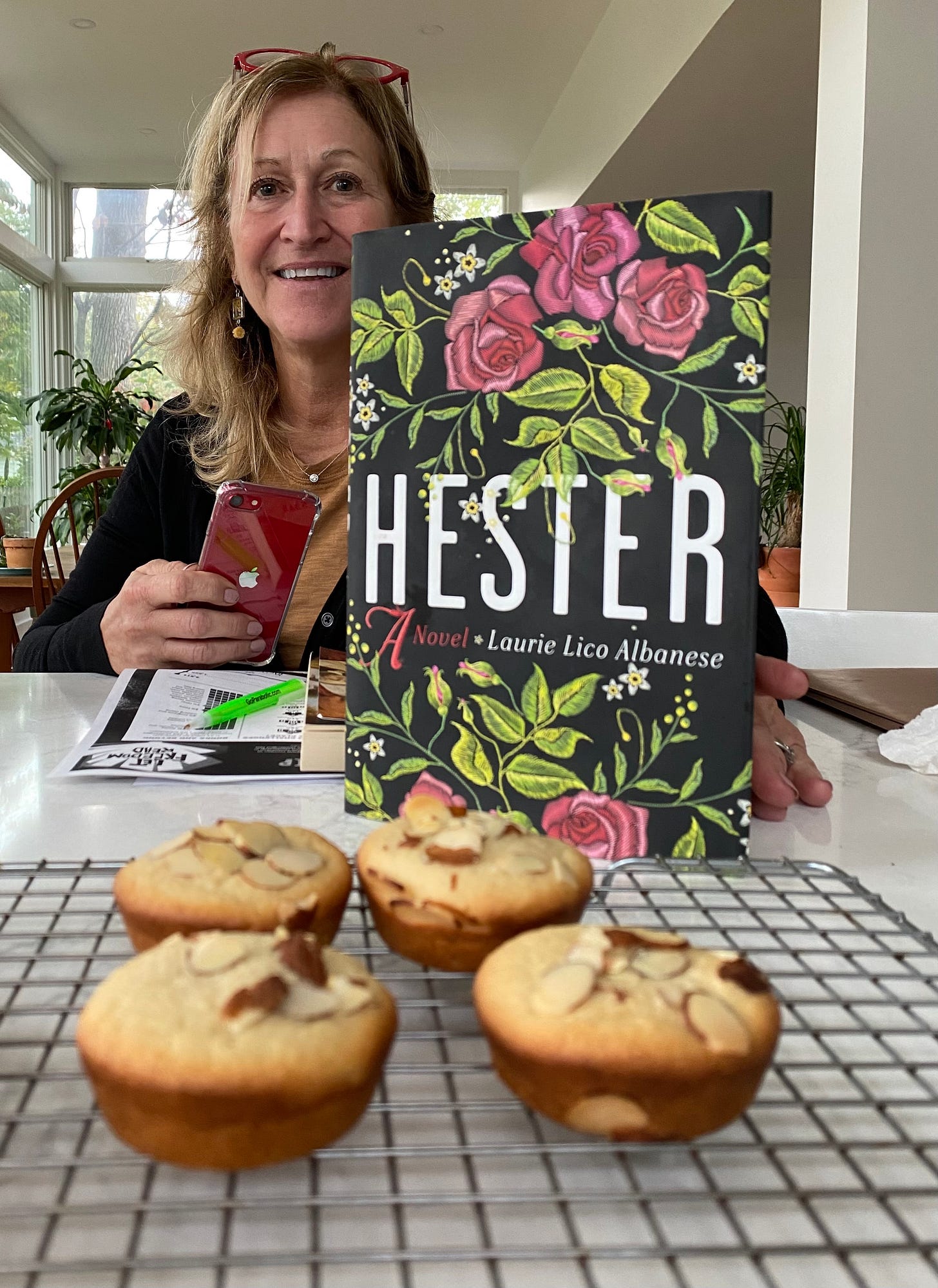

Superb superb!!!! Financiers are egglessellent!!!! ❤️❤️❤️
Do I tune in for your wit or your wisdom?? Toss up because I adore both! Oh... and the baking too!